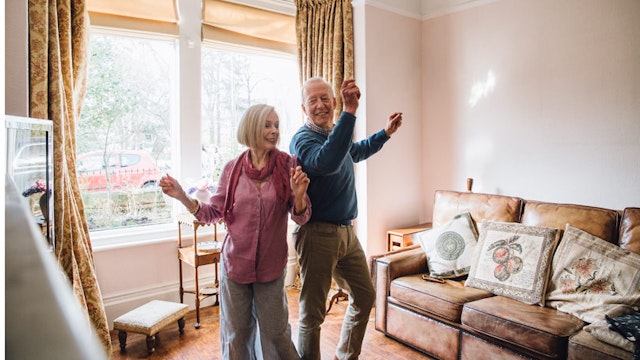How lockdown is accelerating the at-home adoption of Spotify
While the coronavirus outbreak could have easily scuppered Spotify’s empire building plans, it has actually been a welcome opportunity for the audio company as it looks to drive the adoption of its service on home devices.

Lockdown kickstarts Spotify at-home adoption
From March, when non-essential commuting was replaced by remote working, normal listening habits took a detour. Until this point, Spotify was largely consumed on the way to work, on smartphone apps, via in-car software or through wearables.
“Our daily active users started to change because things like the commute clearly dropped away as a result of lockdown,” recalls Rak Patel, the company‘s head of sales for the UK and EMEA. “But then we saw a quick rebound and an increase in terms of usage.”
Patel explains that as people familiarised themselves with the new abnormal, consumption across devices changed and adoption of its in-home offerings has boomed. “Smart speakers, connected TVs and game consoles have exploded in the last few months. Usage across all connected devices at home was up by 40%. Drill that down a bit further and you find connected TVs and game consoles up up by over 50%.”
Spotify has become the soundtrack to cooking, chores and general family time. But whether or not this shift in habits comes to an end when people gradually go back to work, Patel isn’t convinced. With analysts predicting the demise of radio in 10 years‘ time, he sees this as concrete evidence of behaviour change with homes making the switch full time to on-demand.
“It’s a new behaviour and it is something that we will continue to invest in. We think a lot about the future of audio and we think that future has now been accelerated because people have been at home. And our streaming intelligence data means we can make that suite of products even stronger for those who are home.”

Beyond the touchpoints where on-demand can replace linear, Patel says the switch depends a lot on the type of things people listen to on the platform. While often viewed as a music streaming platform, it has been shaking off that association and positioning itself more broadly through an expansive podcast strategy.
During lockdown, its hobby and gardening podcast output has increased. And with people feeling more stressed and anxious during this time, there has been an uptick in the consumption of podcasts related to wellness and meditation.
This empire building comes at a cost and despite reporting a 31% rise in paid subscribers in the first few months of 2020, reaching 130 million paying customers, its revenue fell short of analyst estimates due to a slowdown in advertising because of coronavirus.
“Ad spend downturn has been well documented and clearly, like other platforms and publishers out there, we are prone to it.“
To make up for lost spend, Spotify has been pivoting its ad offerings for brands looking to tap into the home environment. With smart speaker usage up, it grabbed the opportunity to launch its first voice-activated ad in June, for Nars makeup. Working with Dentsu Aegis agencies The Story Lab and Vizeum, the campaign enabled the voice-activated delivery of blush, lipstick, or mascara samples straight to listeners‘ doors.
And it‘s not only humans Spotify has been targeting at home. With pet brands leaning into the platform, it teamed up with Frontline in May on a dog-direct campaign titled ‘If Dogs Could Talk’. Audio spots included high pitched noises for dogs followed by messaging for their owners.
For Spotify, lockdown has been a welcome exercise in accelerating at-home adoption. And with 2020 looking like it could continue to be the year of remote working, we can expect more experiments in longterm behaviour change.

